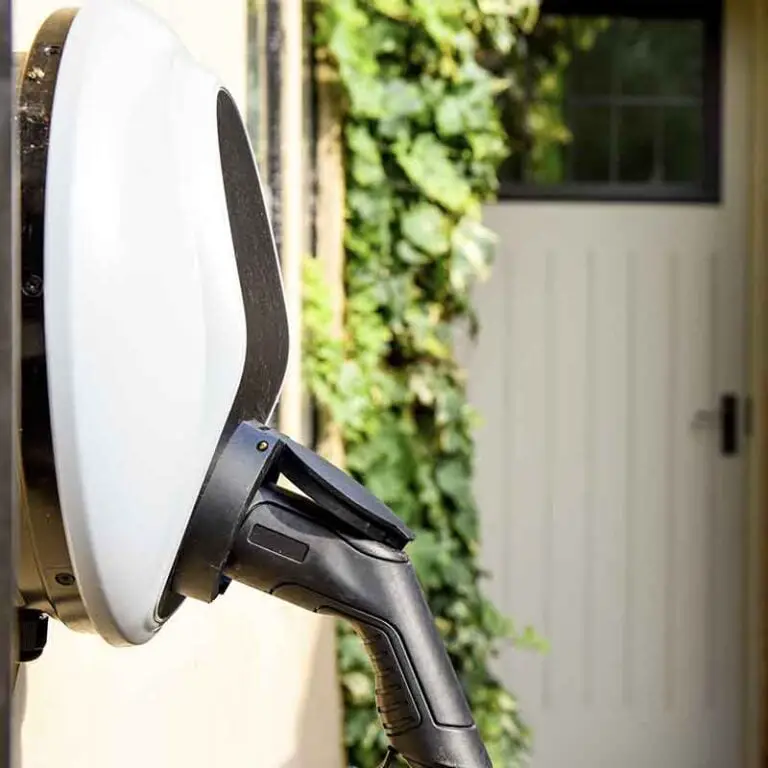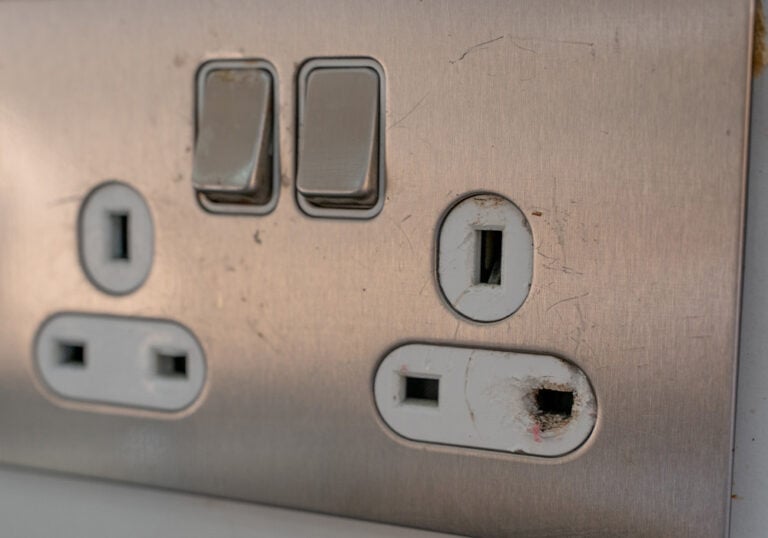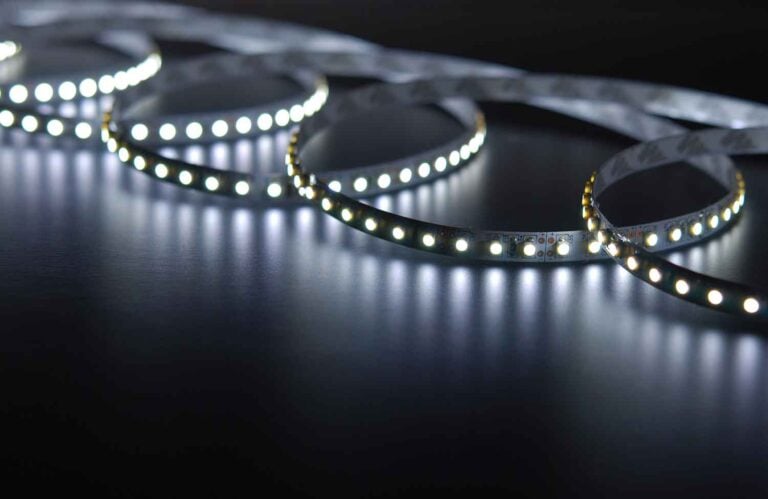The Dangers of Flickering LED Lights
Flickering LED lights may seem like a minor issue but, if left unchecked, can pose several dangers and lead to negative health effects. Although a sudden flicker might not be inherently harmful, continuous and regular flickering can impact not only an individual’s health but the performance of electronic devices as well.
Understanding the causes of flickering LED lights is crucial in addressing the problem and reducing its adverse effects. Loose connections, overheating, and improperly designed LED drivers are just a few culprits behind flickering lights. Familiarising yourself with detection methods and appropriate mitigation strategies can help create a safer environment.
Key Takeaways
- Flickering LED lights can negatively affect health and electronic devices.
- Recognising the causes of flickering lights is essential in addressing the problem.
- Implementing proper detection and mitigation strategies can help ensure safety in your surroundings.
Why are Flickering LED Lights a Concern?
Flickering LED lights might not seem like a significant issue at first glance; however, this phenomenon can have adverse effects on your health and the lighting system’s performance.
Firstly, prolonged exposure to flickering lights can impact your health in various ways. It can cause eye strain, fatigue, and reduced visual task performance. This is particularly concerning for individuals who spend extended periods under these lighting conditions, such as office workers or students. Moreover, flickering lights have been linked to neurological problems and are known to trigger epileptic seizures in susceptible individuals.
Secondly, flickering LED lights can affect the lighting system’s performance. A stable lighting system should not exhibit regular flickering as it indicates a potential issue within the system. This could range from a loose connection or an improperly installed bulb to more severe concerns such as faulty wiring or inadequate power supply.
Lastly, it is essential to consider the possible causes of flickering LED lights. Bulb connections, power supply fluctuations, and the use of incompatible dimmer switches are some of the most common causes. Identifying and addressing these issues is crucial for maintaining optimum lighting performance and ensuring a safe and comfortable environment.
In summary, flickering LED lights should be a cause for concern because of the potential health risks they pose and the impact they may have on the overall lighting system. Taking the necessary steps to identify and address the root causes of flickering can help maintain a safe and efficient lighting environment.
Health Implications
Flickering LED lights can have a range of negative effects on your health. Spending long hours in an environment with flickering lights, such as an office with LED screens and lighting, may lead to headaches, eye strain, fatigue, and dizziness. In certain industrial settings, LED flicker can also cause performance issues and contribute to accidents at work.
Exposure to flickering LED lights, particularly blue light, has been linked to the suppression of melatonin production. This can disrupt your sleep patterns and contribute to a higher risk of heart disease and diabetes. If you are exposed to flickering LED lights at night, it is essential to ensure there is sufficient darkness during your sleep hours to maintain a healthy sleep cycle.

The adverse effects of flickering LED lights are not limited to adults. Children may also experience these symptoms, and it may exacerbate repetitive behaviour in individuals with autism. Asthenopic effects, such as eyestrain and fatigue, can also reduce performance in visual tasks, particularly for those who spend long hours working on a computer or using digital devices.
Seizures, migraines, and stroboscopic effects are other potential risks associated with exposure to flickering LED lights. If you are sensitive to flickering lights, it is crucial to evaluate the lighting sources in your environment and take steps to reduce or eliminate flicker whenever possible.
In summary, the health implications of flickering LED lights are varied and can affect your overall well-being. It is essential to be aware of the risks and take appropriate measures to protect yourself and your family from the potential negative effects of flickering lights.
Psychological Impact of Flickering Lights
Flickering lights, especially from LED sources, can have various negative impacts on your well-being. One of the primary concerns is the effect of flickering lights on your visual performance. A decrease in visual performance can lead to difficulty in concentrating and potentially affect your overall productivity.
Moreover, prolonged exposure to flickering lights can result in non-specific malaise. This term refers to a general feeling of discomfort or uneasiness, which can manifest in various ways, such as headaches, eye strain, and fatigue. Over time, this discomfort can take a toll on your mental health and overall well-being.
It’s also worth noting that flickering lights can trigger neurological problems, particularly in susceptible individuals. For instance, roughly one in 4,000 individuals is recognised as having photosensitive epilepsy, a condition wherein flickering lights may induce epileptic seizures.
In summary, the psychological impact of flickering lights is a concern not to be overlooked. Reducing exposure to flickering lights can help protect your mental health, visual performance, and prevent triggering neurological disorders. When selecting LED light sources, ensure they have minimal flicker to maintain a healthier environment for you and those around you.
Impact on Electronic Devices
Flickering LED lights can have an impact on electronic devices in several ways. One primary concern involves the interference they may cause with other electronic equipment. When LED lights flicker, they emit electromagnetic waves that can potentially disrupt the function of nearby devices. For instance, sensitive equipment like radios, TVs, and computer monitors may experience issues with reception or display quality as a result of flickering LED lights.
Another way flickering LED lights can impact electronic devices is through the wear and tear on the LED lights themselves. As the lights flicker, they undergo repetitive changes in brightness. This constant fluctuation can ultimately shorten the lifespan of the LED lights, leading to more frequent replacements and higher maintenance costs for your lighting system.
Moreover, the performance of the overall lighting system can be affected by flickering LED lights. A stable and consistent lighting environment is essential for the proper functioning of certain devices, such as cameras and motion sensors. With flickering lights, these devices may struggle to capture clear, accurate images or detect movement accurately, potentially leading to impaired performance and reduced effectiveness.
In summary, flickering LED lights can have multiple adverse effects on electronic devices, including interference with other equipment, wear and tear on the LED lights themselves, and compromised performance of devices reliant on stable lighting conditions. To maintain the health and functionality of your electronic devices, it is essential to address the issue of flickering LED lights as soon as it is detected.
Causes of Flickering LED Lights
Flickering LED lights can be both annoying and potentially harmful to your health. Understanding the various causes behind this issue is crucial in addressing it effectively. Here are some common reasons for flickering LED lights:
Loose Connections: A loose or improper connection between the bulb and socket can cause flickering. To fix this, ensure the bulb is correctly and securely installed, without being screwed in too tightly.
Incompatible Dimmer Switches: LED lights may flicker when connected to dimmer switches designed for incandescent or halogen bulbs. To avoid this issue, use dimmer switches specifically designed for LED lighting.
Faulty Bulb Components: LED lights with defective drivers or other internal components can result in flickering. In such cases, replacing the bulb with a high-quality LED light is often the best solution.
Unclean and Fluctuating Voltage: An unclean and fluctuating output voltage from your transformer may cause your LED lights to flicker. You should consider replacing old halogen transformers with LED power supplies to resolve this issue.
Remember, flickering LED lights are not just an inconvenience but can also cause health issues such as eyestrain, fatigue, blurry vision, and in some cases, epilepsy. Taking the necessary steps to identify and eliminate the cause of flickering LED lights will make your home or workplace safer and more comfortable.
How to Detect Flickering in LED Lights
Detecting flickering in LED lights is crucial to safeguard your health and improve the quality of your lighting. Flickering can cause eye strain, fatigue, and even neurological problems. To ensure your LED lights do not exhibit flickering, follow these simple methods to detect and resolve flicker issues.
One easy method to detect flickering in LED lights is to use your smartphone camera. Turn on your phone’s camera and point it towards the light source in question. Observe the image captured on the screen. If you notice a series of dark and light bands travelling slowly across the screen, then your light has flicker. If the bands are barely noticeable, your light is likely stable.
Although using a smartphone is a convenient method to check for flickering, the most scientifically accurate way to determine the extent and severity of flicker is by using specialised equipment like oscilloscopes or light meters. However, these tools usually come at a high price, making them impractical for most consumers.
It’s important to note that all mains-powered light sources, including LED lights, inherently flicker to some extent. However, a correctly functioning LED light will have flicker rates beyond what the human eye can perceive, ensuring your comfort and safety.
To maintain flicker-free LED lighting, always ensure the compatibility of your lightbulbs and dimmer switches. In many cases, adjusting the dimmer switch in the right direction can help stop or mitigate the flickering. Additionally, using high-quality LED drivers and power supplies minimises the risk of flickering and other performance issues.
By detecting and addressing flickering in LED lights, you can enhance your home’s lighting experience and reduce potential health risks associated with flickering lights.
Mitigation Strategies
LED lighting technology is undoubtedly energy-efficient, but poor design and manufacturing quality can result in flickering lights, which might pose health and safety risks. However, worry not; there are several mitigation strategies that can be employed to reduce the impact of flickering LED lights on your well-being.
Firstly, selecting high-quality LED products is crucial. Prioritise reputable brands and look for certifications from established organisations. This ensures that the LED lights you purchase have undergone thorough testing and meet performance standards.
Another essential step is to use the appropriate driver equipment for your LED lights. Efficient driver equipment reduces flicker by providing consistent voltage and current supply to the LEDs. Some LED lighting systems have built-in flicker reduction circuits, which can be beneficial to invest in.
Controlling the modulation frequency of your LED lights can also help mitigate flicker. Increasing the frequency to an appropriate level can make the flickering less noticeable to the human eye, reducing its adverse effects.
Moreover, you can consider using diffusion technologies in your lighting setup. By diffusing the light output, you can reduce the visibility and impact of flickering LED lights. This can be achieved through the use of various diffuser materials, such as frosted glass or plastic panels.
Lastly, it’s essential to maintain your LED lights regularly. Keeping your lighting system clean and in good condition can help prevent flickering and prolong the life of your LED products. Routinely check for loose connections, dust accumulation, and signs of wear in your lighting equipment.
By implementing these practical mitigation strategies, you can minimise the potential risks associated with flickering LED lights and ensure a safe and comfortable environment at home or in the workplace.
Choosing the Right LED Lights
When selecting LED lights for your home or workplace, it’s important to consider the potential dangers of flickering LEDs. To ensure you choose the right LED lights to minimise these risks, follow these guidelines:
1. Check for recognised certifications: Look for LED lights that have certifications like CE, RoHS, or UL. These certifications indicate that the product has met specific safety and performance standards.
2. Invest in high-quality products: While it might be tempting to save money by purchasing cheaper LED lights, doing so may increase your chances of experiencing flickering and other issues. Go for reputable brands and higher-quality products to ensure consistent performance and longevity.
3. Verify the flicker rate: Some LED lights may have low flicker rates, causing visible flickering or an invisible flicker rate above 60 Hz that can negatively affect your health. Choose LED lights with a flicker rate of less than 3% to minimise these risks.
4. Confirm compatibility with dimmers: If you plan to use LED lights with a dimmer switch, make sure they are compatible with one another. Incompatible bulbs and dimmers might cause flickering.
5. Choose the right colour temperature: LED lights come in a range of colour temperatures, measured in Kelvin (K). Warmer colour temperatures, like 2700K, provide a more relaxing atmosphere, while cooler colour temperatures, like 5000K, offer a more energising environment. Consider your personal preferences and the intended use of the room when selecting the colour temperature.
By taking these factors into account, you can make an informed decision when selecting LED lights. This not only ensures better performance and reliability but also helps preserve your health and well-being by minimising the potential dangers associated with flickering LED lights.






